While the riders, teams and track crew worked feverishly to prepare for the Red Bull FIM Motocross of Nations the night before the event, a select group of professionals and industry figures met on the far side of the Thunder Valley pit area in a quiet, makeshift meeting room. Their purpose: Safety. As the rest of the international industry was focused on the upcoming race, this group of doctors, engineers, former pro racers and specialists spent upwards of six hours discussing the future of motocross and, specifically, how to make it a safer sport for all involved.The legendary Dr. John Bodnar, track physician for the AMA since 1992 and medical director for the Asterisk Mobile Medical Center since 2000, moderated the summit meeting. Its keynote speaker was Dr. Mark R. Lovell, Ph.D., a nationally renowned sports concussion researcher and expert on moto medicine. Other speakers included helmet safety expert Dave Thom, Biomedical Engineer Comel de Jongh, Colorado Motocross Medics director Dr. John P. Abbottl, Clint Fey, EMT-P, Shock Doctor/ Eject Helmet Removal System developer Bill Best and several others. Together, these gentlemen discussed everything from Leatt braces to trackside safety to the usage of video games as a balance apparatus, with an emphasis on sharing knowledge and increasing both the short and long-term safety of two-wheeled racers.
While the safety summit was extremely comprehensive and detailed, there are a number of important issues that were continually addressed. One such topic was that of the role of concussions in relation to recovering from a hard crash. In his address, Dr. Lovell discussed the fact that every athlete has a baseline level of performance that they much be measured by, and that a racer should only be allowed to return to riding when they have physically returned to their baseline cognitive abilities. Dr. Lovell cited a case study of a young football play who had two concussions in one week but didn't tell anyone, and after several weeks his cognitive abilities were being affected so much that his grades dropped. Had the young player taken time to rest and allow a return to baseline, Dr. Lovell maintains that there is a 50% chance that the player would have been good to go in two weeks, and an 80% chance that in three weeks he would have been cleared to play. Much of this has to do with the fact that when a rider gets a concussion, their condition is only worsened by physical activity.This address was followed up by words from Dave Thom, the legendary helmet safety guru who conducted the recent Dirt Rider helmet test. Thom outlined the differences between the now-obsolete Snell M2005 test and the new M2010 helmet test by which helmets are tested. He showed some really neat videos in which helmets were testing by straight-line acceleration with a head form inside (interestingly enough, the European 2205 test uses a decapitated head form, while the DOT test uses a head with a neck). Anyhow, helmet performance is measured by things like peak acceleration, time at a G-force and severity of the hit. Thom informed his audience that the Snell test currently does not measure whiplash, but 20 years from now, it will. In short, Thom's address centered around the fact that helmets are used to reduce and prevent catastrophic contact head injuries, and that we must always be working to improve on helmet performance in order to maintain the highest safety standards possible.As each speaker took to the lectern, the theme of safety rang throughout the room. It's a known fact that the sport of motocross is dangerous, but with great minds such as those found at the International Safety Summit continuing to work to make the sport safer, racers will be able to continue to ride at their limits knowing that better care, protection and knowledge is being used to keep them well. The results of this meeting of the minds will likely be seen immediately and in the future, whether it's through a better helmet design, a more informed trackside responder or new safety innovations and protocol specifically geared towards motocross. Major thanks are due to everyone who is currently working to make MX a better, safer sport.
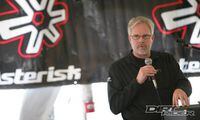
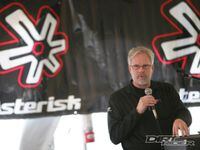

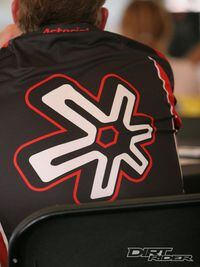
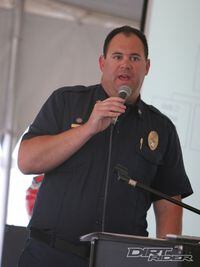
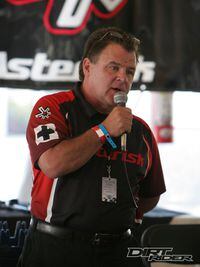
/cloudfront-us-east-1.images.arcpublishing.com/octane/KQUVDTNB6VF53CRDNN47BE3VUA.jpg)
/cloudfront-us-east-1.images.arcpublishing.com/octane/3T32INAZQRGPXOGGA36NQJDSSM.jpg)
/cloudfront-us-east-1.images.arcpublishing.com/octane/EPLS5PBKXBHNXK7S5O7G4ND3YQ.jpg)
/cloudfront-us-east-1.images.arcpublishing.com/octane/MNGOZAGZFZBH5DPFV7NOPF5S3Y.jpg)
/cloudfront-us-east-1.images.arcpublishing.com/octane/VGJWIIFM2VBCXG34KRQ37GCP7U.jpg)
/cloudfront-us-east-1.images.arcpublishing.com/octane/2ZU3HXRPMZESJF7HDLZJV7FHEY.jpg)
/cloudfront-us-east-1.images.arcpublishing.com/octane/VVFWQBZEIZDVJHZIW5ISKWKOZU.jpg)
/cloudfront-us-east-1.images.arcpublishing.com/octane/7T7FZXHIIBDX7AOBD5S3IICUJI.jpg)
/cloudfront-us-east-1.images.arcpublishing.com/octane/T3Y7A52TXBEBJNEPGOQSVPQSPU.jpg)
/cloudfront-us-east-1.images.arcpublishing.com/octane/KY33U3WBTNFIBJFMTEF2SM7BOQ.jpg)
/cloudfront-us-east-1.images.arcpublishing.com/octane/JNPS5MGVXJC7BARVMARYQIQHXE.jpg)
/cloudfront-us-east-1.images.arcpublishing.com/octane/63N2P6SYAZDURJDO5KARQYX2J4.jpg)
/cloudfront-us-east-1.images.arcpublishing.com/octane/C72WX35SXFETTO5OVA2RWT523I.jpg)
/cloudfront-us-east-1.images.arcpublishing.com/octane/F3ER37EV2RGY5CRYFNTWE3JSF4.jpg)
/cloudfront-us-east-1.images.arcpublishing.com/octane/L65QCUR32RH2NKCUHXYHHAPDFI.jpg)
/cloudfront-us-east-1.images.arcpublishing.com/octane/VSK246VVRRDMBNQU7B2NTNY6AE.jpg)
/cloudfront-us-east-1.images.arcpublishing.com/octane/CG64RRFAYRENNAP2AA22T2LSJY.jpg)
/cloudfront-us-east-1.images.arcpublishing.com/octane/IKZSRLBWMRDORMORBXSISL4D6M.jpg)
/cloudfront-us-east-1.images.arcpublishing.com/octane/BJLVRPJSDFC3ZLPMW3LYYHMPZE.jpg)
/cloudfront-us-east-1.images.arcpublishing.com/octane/RQW2RFU4MJDYRPVFJNW362SEXU.jpg)
/cloudfront-us-east-1.images.arcpublishing.com/octane/CGQDU7HEEBBWBLF6SMXCJIW7DI.jpg)
/cloudfront-us-east-1.images.arcpublishing.com/octane/B35XXACE4ZGU5BWSEMEFUL6SN4.jpg)
/cloudfront-us-east-1.images.arcpublishing.com/octane/TDSGY4VSSRC4LP6PYXP62U236Y.jpg)
/cloudfront-us-east-1.images.arcpublishing.com/octane/4YWNAG64EZF63AQI3VL7ANERSY.jpg)